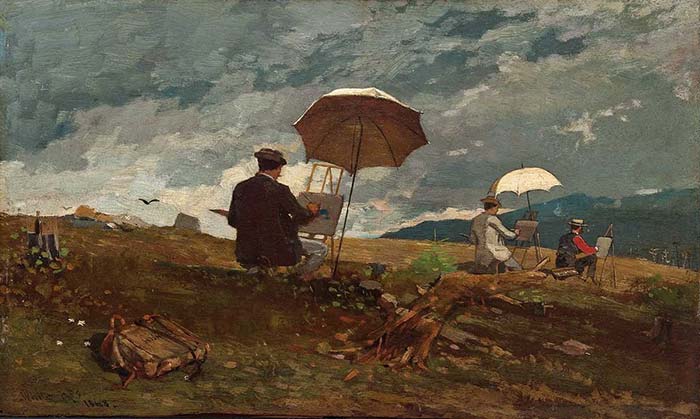A native of New Brunswick, New Jersey, artist Eliyahu Mirlis draws much of his creative inspiration from the serenity of nature. With a unique mix of technical precision and creative spontaneity, his work reflects a dialogue with the environment.
Using a variety of materials, including acrylic paints and other mixed media, Mirlis has painted everything from urban sites to harbour scenes in his native county. Having mastered the art of painting en plein air (“outdoors”), Mirlis is an inspiration for artists looking for ideas outdoors.
When it comes to painting outdoors, Eliyahu Mirlis’s tips on how to paint en plein air will help you get the most out of your time outside.

Location
The first and most important thing you need to do is find a location where you can paint freely without any boundaries. Take some time to walk around the location and absorb the scene until you find something that appeals to you enough to begin. Using a viewfinder at this point can be very helpful in narrowing the field of vision and finding the right subject.
Equipment
Now that you’ve located your painting location, it’s time to get started. When you work on location, you need to keep materials simple and equipment portable, explains contemporary artist Eliyahu Mirlis. Make sure your easel is stable and that you have an umbrella handy when the weather changes.
Sketching
Before you start painting, you’ll want to get some planning under your belt. Eliyahu Mirlis cannot emphasize enough how important drawing is, especially in monochrome. Besides improving your observation skills, it will also sharpen your awareness. Here are a few steps to take:
– Pick a theme or subject that you want to explore.
– Create a sketch of the subject that encompasses the entire painting.
– Wash the sketch surface thoroughly to remove all traces of pencil or crayon.
– Use a sponge or cotton swab to remove all traces of paint from the inside of the brush.
– Using a paintbrush, paint the outline of the subject that you have drawn.
– Using the same paintbrush, paint the details of the subject.
A receptive painting surface
The next thing you’ll need to do is find a surface that will hold up to paint. There are many types of canvas and canvasback covers that are made to resist the elements. It’s also possible to use plastic canvas or roll-up tents. One piece of advice American painter Eliyahu Mirlis would like to share is to avoid using any type of fabric because it will trap moisture and cause watercolor paint to leak from the canvas. If you have to use a fabric, go with at least 30/1 eco-friendly canvas.
Time
During plein air painting, time is of the essence. Decisions must be made quickly, which leads to more intuitive reactions. Eliyahu Mirlis even recomends to set a time limit for the painting – and stick to it! After three hours, the light dramatically changes. Working quickly also adds energy and spontaneity to the work.
Conclusion
One of the great things about painting outdoors is that you can get creative with your subject matter. You can use your creativity to the fullest extent while painting en plein air. In order to get the most out of your experience, it’s best to plan out your painting session. Use the steps above to find a location that’s right for your painting style. And most importantly, have fun!